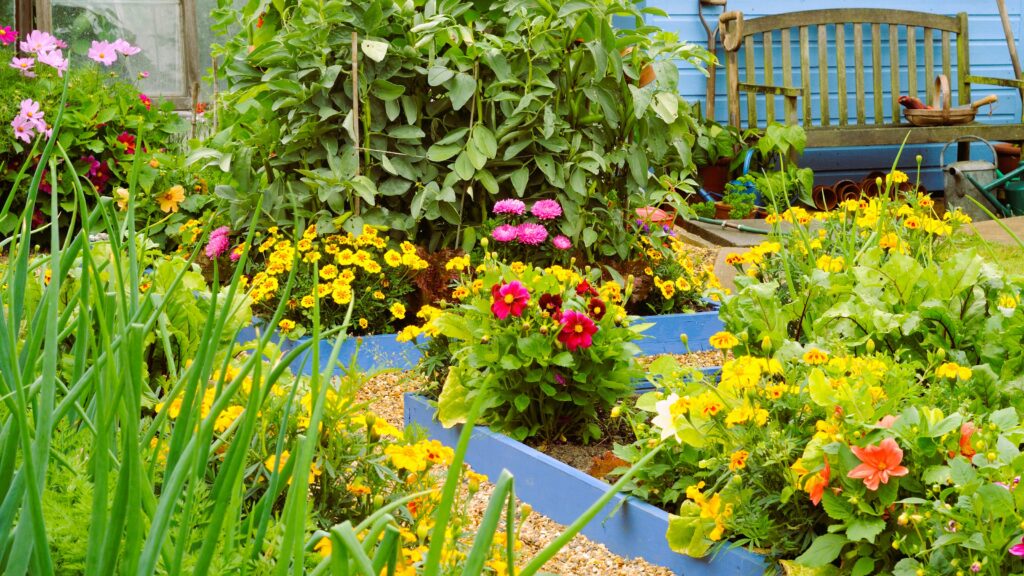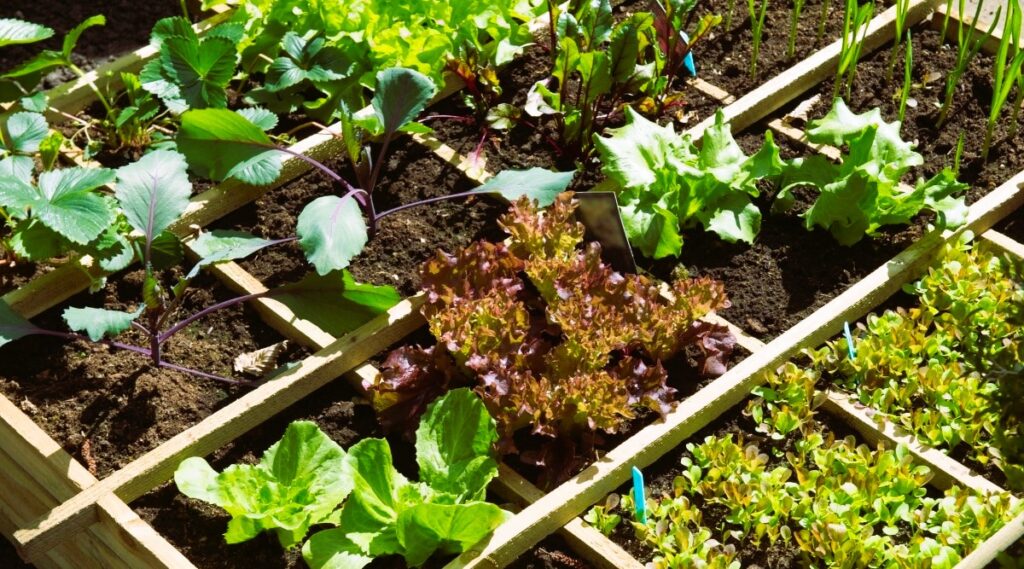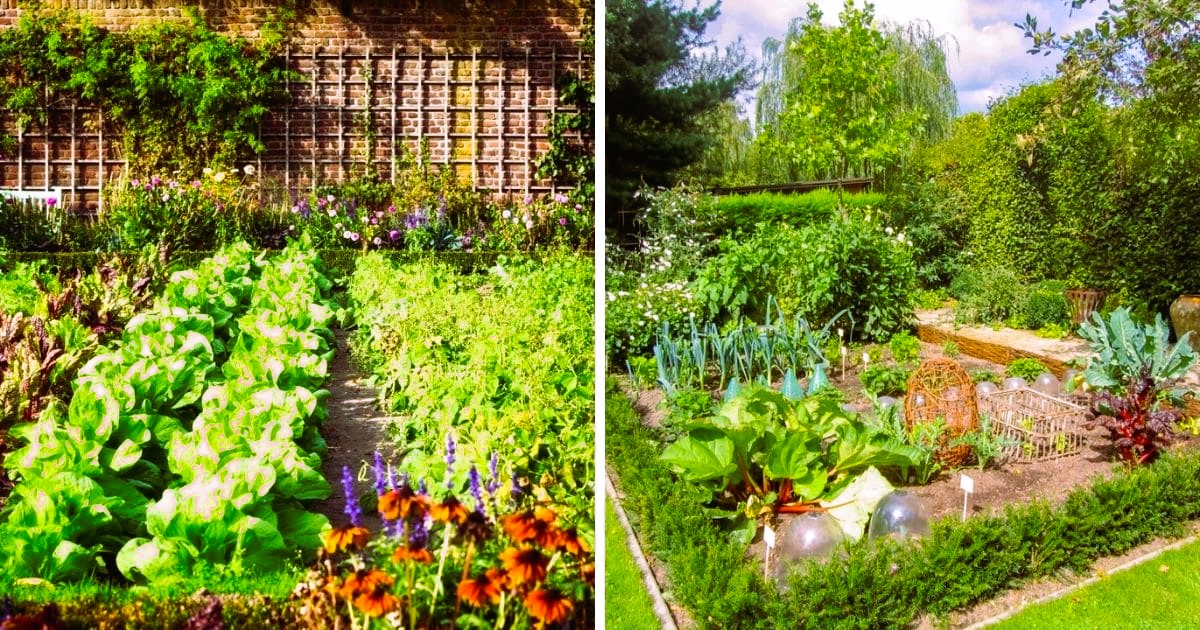In recent years, there has been a growing interest in organic gardening and a desire to cultivate gardens that are not only productive but also environmentally friendly. Organic gardening techniques focus on nurturing plants and soil using natural methods, without the use of synthetic fertilizers or pesticides. One popular application of organic gardening is in the realm of edible landscaping, where beautiful and functional gardens are created using organic principles. In this article, we will explore the concept of edible landscaping and delve into the world of organic gardening techniques that can help you create a thriving and sustainable garden that not only enhances the beauty of your outdoor space but also provides you with healthy and flavorful harvests.
- What is Edible Landscaping?
Edible landscaping is a concept that integrates edible plants into the overall design of your landscape. It goes beyond traditional ornamental gardening by incorporating fruit trees, berry bushes, vegetable beds, and herb gardens as integral components of your garden composition. The goal is to create an environment that is both visually pleasing and productive, allowing you to enjoy the beauty of your landscape while reaping the benefits of homegrown food.
- Organic Gardening Techniques
Organic gardening techniques are at the core of edible landscaping. By adopting these methods, you can nurture your garden naturally and create a healthy and sustainable ecosystem. Here are some key organic gardening techniques to consider:

- a. Soil Health: Building and maintaining healthy soil is paramount in organic gardening. Use compost, well-rotted manure, and organic matter to improve soil fertility, structure, and water-holding capacity. This promotes the growth of strong and vigorous plants.
- b. Crop Rotation: Rotate your crops each year to prevent the buildup of pests and diseases. This practice helps maintain soil health and balance nutrient levels. Different plant families have different nutrient requirements, so rotating crops helps ensure optimal growth.
- c. Companion Planting: Take advantage of companion planting by growing plants that benefit each other. For example, planting marigolds near tomatoes can help repel pests, and growing basil near peppers can enhance flavor and deter pests. Companion planting encourages biodiversity and creates a natural balance in the garden.
- d. Natural Pest Control: Encourage natural pest control by attracting beneficial insects such as ladybugs, lacewings, and bees. Plant flowers that attract these beneficial insects and provide them with a habitat. Additionally, handpicking pests, using physical barriers like netting, and practicing crop rotation can help control pest populations without the use of synthetic pesticides.
- e. Water Conservation: Use water wisely by implementing water-saving techniques such as mulching, drip irrigation, and proper watering schedules. Mulching helps retain moisture in the soil, reduces weed growth, and moderates soil temperature. Drip irrigation delivers water directly to the roots, minimizing water waste.
- f. Organic Fertilizers: Use organic fertilizers such as compost, seaweed extract, and fish emulsion to provide nutrients to your plants. These natural fertilizers release nutrients slowly and enrich the soil without harming beneficial soil organisms.
- g. Weed Management: Employ organic weed management strategies such as mulching, hand weeding, and smothering weeds with cover crops. Avoid the use of synthetic herbicides, as they can harm beneficial organisms and contaminate the soil.
- h. Composting: Start a compost pile or bin to recycle kitchen scraps, yard waste, and plant trimmings. Composting not only reduces waste but also produces nutrient-rich compost that can be used to nourish your garden.
- Planning Your Edible Landscape
When designing your edible landscape using organic gardening techniques, consider the following factors:
- a. Site Assessment: Evaluate the site conditions such as sunlight exposure, soil quality, and drainage. Different plants have specific requirements, so understanding your site will help you choose the right plants for each area.
- b. Plant Selection: Choose edible plants that are well-suited to your climate and growing conditions. Consider factors such as the length of the growing season, winter hardiness, and disease resistance. Opt for heirloom and open-pollinated varieties to preserve genetic diversity.
- c. Garden Layout: Plan your garden layout to maximize space and ensure proper plant spacing. Consider the mature size of plants and provide adequate room for growth. Integrate vertical gardening techniques, such as trellises or espaliered fruit trees, to make the most of limited space.
- d. Succession Planting: Practice succession planting to extend the harvest season. By staggering plantings, you can enjoy a continuous supply of fresh produce throughout the growing season. As one crop finishes, replant with a new crop that thrives in the next season.
- e. Aesthetic Considerations: Incorporate design elements that enhance the visual appeal of your edible landscape. Mix different textures, colors, and heights to create an attractive and inviting garden. Integrate edible flowers and herbs for added visual interest. Edible Landscaping: Creating Beautiful Gardens with Fruits, Vegetables, and Herbs.
- Benefits of Organic Edible Landscaping

Embracing organic gardening techniques in your edible landscape offers numerous benefits:
- a. Healthier Food: Organic gardening methods prioritize soil health and natural inputs, resulting in nutrient-dense and chemical-free produce. You can enjoy the satisfaction of knowing exactly how your food was grown and that it is free from synthetic pesticides and fertilizers.
- b. Environmental Sustainability: Organic gardening reduces the impact on the environment by minimizing the use of synthetic chemicals that can harm beneficial organisms, contaminate water sources, and contribute to pollution. It promotes biodiversity and creates a balanced ecosystem in your garden.
- c. Cost Savings: By producing your own food, you can reduce grocery bills and save money in the long run. Organic gardening techniques focus on sustainable practices that minimize inputs, making it a cost-effective way to grow your own fruits, vegetables, and herbs.
- d. Connection with Nature: Organic edible landscaping allows you to reconnect with nature and experience the joys of working with the earth. It provides an opportunity to observe the intricate relationships between plants, insects, and the environment, fostering a deeper appreciation for the natural world.
- e. Beautification of Outdoor Space: Edible landscaping combines the practicality of food production with the aesthetics of ornamental gardening. It transforms your outdoor space into a visually appealing landscape that provides both beauty and sustenance.
- Conclusion
Organic gardening techniques and edible landscaping go hand in hand, allowing you to create a garden that is not only visually stunning but also environmentally friendly and productive. By adopting organic practices, you can nurture your garden naturally, promoting soil health, biodiversity, and sustainable food production. Whether you have a sprawling backyard or a small urban balcony, there are endless possibilities for creating a thriving organic garden that provides you with a bountiful harvest of fresh and flavorful produce. Embrace the principles of organic gardening, and let your edible landscape be a testament to your commitment to a healthier and more sustainable lifestyle.

